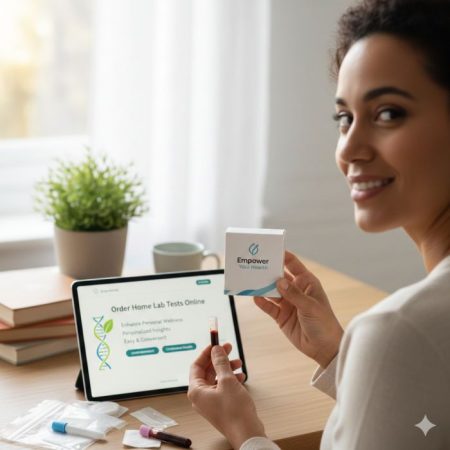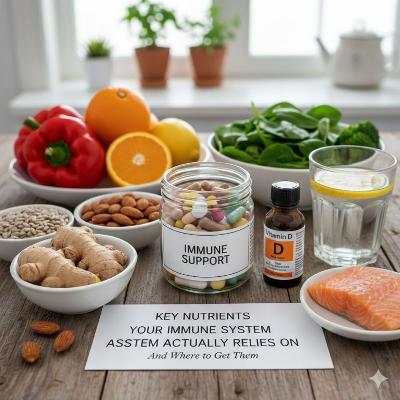Are you looking for essential supplies to put into your home first aid kits?
Though we don’t want them to happen, it’s best that you prepare for any accident or emergency that may come your way. Most people think that it’s unlikely an accident will happen to them. If that were true, there wouldn’t be 35 million injury-related cases in the emergency rooms across the USA.
This is why it’s always a good idea to have a first aid kit available for you to use. These should have the basic supplies that you may need to help yourself or anyone who needs aid in any situation. What items should you have in your kit, though?
Rather than overfilling a first aid kit and ending up wasting most of the items inside, it’s best to stock up on only the essentials. Read on to learn which items are a necessity in your kit.
Different Types of Bandages
Bandages should always be the first items you put inside your first aid kit. These have a long shelf life, which means that you don’t need to replace them as often as other things. This makes them perfect as investments since you know you won’t need to spend on them until far into the future.
The basic elastic wrap bandage should be present in any kit. These are versatile enough to use on any wound and can secure any rag or cloth in place. They’re also great at helping compress a swelling area after an accident.
Doing this is important to both protect the area and reduce the pain that the victim feels from it. You can also use the elastic bandage to further compress the injury by securing an ice pack on the area.
You should also have some bandage strips to help close smaller wounds. It’s best to get a variety of sizes to ensure that you have one for any situation. This also allows you to keep small and shallow wounds clean as you travel to the nearest hospital.
You should also add some butterfly bandages to your kit. These are small special bandages that are helpful in closing up small wounds. They also stop the bleeding of shallower cuts, helping you identify if there’s a worse wound somewhere on the victim.
Speaking of specialty bandages, you should also get abdominal and eye pads. Eye pads can protect any eye wound from any foreign body that may enter it during transport. Abdominal pads are specialty bandages that you can use to cover and stop the bleeding of any large abdominal wound.
Stabilizers
When an accident occurs, there’s no telling when you may have broken something. No matter how small it is, any fracture or bone break will be painful and can even cause a person to pass out from the pain. Most of the pain that people feel is because the break or fracture still moves around.
This is why it’s important to stabilize any fracture that happens because of an accident. For small fractures, such as finger fractures and such, it’s best to have aluminum finger splits. These are long-lasting and durable because they’re made from aluminum.
This also makes them non-toxic, which is important to prevent people from having a bad reaction in addition to their fracture. It will hold the finger in place and help the bone recover faster.
For bigger fractures, it’s best to have regular splints prepared. To aid the splints, invest in a triangular bandage in your kit. You can use this as a sling to support fractured arms.
Stabilization also means helping someone prevent the deterioration of their current condition. After an accident, this often means that the person will be bleeding from somewhere on their body. To prevent this from getting worse, you should have a rubber tourniquet at the ready.
You can use this to cut the blood flow and help reduce any excessive bleeding. You should also have a catheter in your first aid kit. This is so you can drain any fluid that’s pooling inside a person’s body.
Internal bleeding can be a silent killer if not handled well. You can use a catheter to drain any blood that’s collecting somewhere that it shouldn’t.
Cleaning Materials
Basic cleaning materials are also a must when stocking your first aid kit. Keeping any wound, your hands, and the area clean is important to ensure it doesn’t get worse as you perform first aid. Basic items include sterile gauze, hydrogen peroxide, and antiseptic solution.
These help you disinfect any wounded area and keep them clean as you treat them. Clean towelettes should also be in your first aid kit. They should be the only things that touch any wound directly.
It’s too risky to allow anything else to touch open wounds, even the clothes the person is wearing. Speaking of, you should also have a pair of scissors in your kit. Use this to cut away anything that’s blocking you from having direct access to the wound.
It’s also good to have some safety pins in your kit to help hold clothes away from the wound. Cotton balls or swabs will then help you clean the area around the wound. This will give you an idea of how bad the damage is after the accident.
Tweezers can also help clean up certain wounds. Anything that entered the body should get plucked out immediately. Tweezers can serve as a good way for you to pick out larger foreign bodies to help the wound recover faster.
You should also carry a bottle of eyewash solution in case you need them. If dirt or any foreign material lingers in the eyes, it can cause further damage to the eyeball itself. A good cleaning solution that’s eye-safe allows you to remove any foreign body that goes into the eyes.
Different Documentations
In case you and your family get into a bad accident, you’ll want people to know what you each need to help you recover. This is why you should also have some documents inside your kit. These should detail what conditions your family has and the medication that they need in case of an accident.
It should also have the medical history forms of each of your family members. This will give a lot of insight to the people performing first aid on you and your family. Consent forms should also be in order in case the hospital needs to know whether you’re suitable for certain tests and treatments.
Also, include the numbers of your family doctor if available. They can give a better explanation of the history of your family and the medication you’re on.
Medication and Different Topicals
You should fill the first aid kit with medicine and topicals that you know you’ll need in the event of an accident. You should at least have one of the basics like antacids, laxatives, and anti-diarrhea medicines. This can help transform your first aid kit into more of an everyday necessity.
Antihistamines should also be present in the kit. You can be as careful as want to, but there will be times when you’ll get an allergic reaction. It can be from something that you ate or from dust in the air, but you’ll want to have antihistamines with you when you do.
If you’re prone to worse allergic reactions, you need to have an auto-injector in your kit. This can save your life from conditions like anaphylactic shock and such.
You should also have different kinds of painkillers on you in case you get into a bad accident. Aloe vera gel and calamine lotion can help with burns and such, too.
When you’re doing this, it’s best that you maintain your first aid kit regularly. This is because the medicine can still expire, and maintaining first aid kits help you see if they’re past their due. What’s great is that first aid refills often cover these medicines and topicals, allowing for easy replacements when needed.
Basic Emergency Items
It’s also a good idea to fill your kit with items that could prove useful during an emergency event. Flashlights, waterproof matches, and extra batteries are good things to start with. These can help you through many situations when you find yourself a ways away from civilization.
Pack an emergency space blanket, too, in case you get stranded in the cold. In contrast to that, sunscreen will help you when you’re stuck somewhere you’re exposed to the sun. It’s also a good idea to have a cell phone with a solar charger installed at the back.
It can help you by allowing you to alert people that you’re stranded somewhere. Have numbers of local authorities and road services, too, so you can get rescued sooner. It’s also a good idea to have some water in your kit to help you avoid dehydration. Apart from the general first-aid kit, you might as well need any specific healthcare kits. It could include various kits like hair kits etc. It would be best to take professional advice to get these made as per your individual needs. It is recommended to check this out on the best digital healthcare platforms like Numan where you can find the required details and the assistance of the health experts.
Place These Essential Supplies in Your First Aid Kit Today
You can never be sure when a medical emergency may occur. When it does, you’ll be glad that you have your first aid kit stocked with essential supplies with you. Fill your first aid kit now and prepare yourself for any situation today!
Do you want more tips to help you prepare for any accident that may happen? Check out more of our guides today! Learn a thing or two with the help of our posts!






